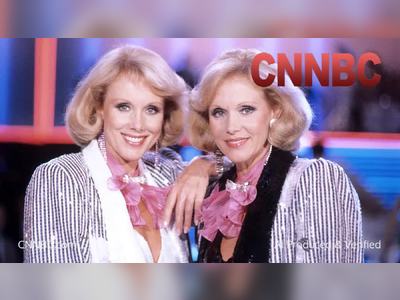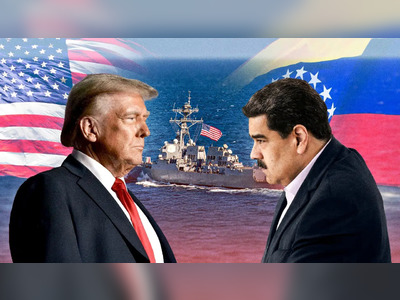President Donald Trump Hosts Saudi Crown Prince Mohammed bin Salman at White House to Seal Major Defence and Investment Deals
On his first visit to Washington in over seven years, the Saudi heir signs agreements including an anticipated F-35 sale and multi-billion-dollar U.S. investments
In Washington, President Donald Trump welcomed Crown Prince Mohammed bin Salman of Saudi Arabia to the White House on Tuesday, in a ceremony filled with military honours, formal receptions and a high-profile meeting.
The event marked the prince’s return to the U.S. capital after a gap of more than seven years and underscored a new phase in U.S.–Saudi relations.
The arrival was greeted with full pomp: U.S. Marines, a mounted escort brandishing both American and Saudi flags, and a fly-over of six F-35-style fighters.
President Trump greeted the prince personally and described their relationship as one of “good friends for a long time”.
The crown prince in turn praised Trump’s assistance in facilitating peace accords and regional diplomacy.
One headline outcome of the visit was President Trump’s formal confirmation that the United States will proceed with the sale of the advanced F-35 stealth fighter jets to Saudi Arabia—an announcement made on the eve of the prince’s arrival.
The kingdom has requested up to forty-eight jets in a deal that could reshape the military balance in the region and raise questions about preserving Israel’s qualitative military edge.
Congressional oversight is expected to intensify as the deal moves forward.
Further agreements announced during the meeting include Saudi Arabia’s commitment to large-scale U.S. investment—estimated at hundreds of billions of dollars—focusing on artificial intelligence, data-centre infrastructure, civil nuclear cooperation and critical-minerals development.
These deals align with Donald Trump’s broader objective of drawing foreign capital into American industry and boosting strategic partnerships beyond energy.
On diplomacy, the leaders discussed the possibility of further normalisation between Saudi Arabia and Israel under the framework of the Abraham Accords, although the crown prince reiterated the kingdom’s requirement of meaningful progress toward Palestinian statehood before full formal ties are concluded.
President Trump emphasised the United States’ role in supporting such advances, though he tempered his language by saying he did not wish to use the term “commitment” prematurely.
Analysts say the visit reflects President Trump’s resolve to reposition Saudi Arabia not merely as a defence client but as a major investment partner and regional stabiliser.
For his part, the crown prince appears to be completing a process of international rehabilitation—after years of diplomatic censure—by projecting economic ambition and strategic alignment with the United States.
Still, the F-35 sale remains controversial.
Critics warn of technology leakage, note Saudi Arabia’s deepening ties with China, and stress the need to maintain Israel’s security advantage.
Within Congress and among U.S. allies, this aspect of the deal will face rigorous scrutiny.
At the same time, the sheer scale of investment and the optics of the visit signal the Trump administration’s full-throated embrace of Riyadh as a cornerstone of his Middle-East strategy.
As the evening concluded with a formal White House dinner and planned signing ceremonies for the next day, the core question is whether the rollout will deliver tangible results or merely high-level promises.
For now, the message is clear: the United States and Saudi Arabia are signalling a new era of cooperation—economic, military and geopolitical—in which President Trump and Crown Prince Mohammed bin Salman are key protagonists.
The event marked the prince’s return to the U.S. capital after a gap of more than seven years and underscored a new phase in U.S.–Saudi relations.
The arrival was greeted with full pomp: U.S. Marines, a mounted escort brandishing both American and Saudi flags, and a fly-over of six F-35-style fighters.
President Trump greeted the prince personally and described their relationship as one of “good friends for a long time”.
The crown prince in turn praised Trump’s assistance in facilitating peace accords and regional diplomacy.
One headline outcome of the visit was President Trump’s formal confirmation that the United States will proceed with the sale of the advanced F-35 stealth fighter jets to Saudi Arabia—an announcement made on the eve of the prince’s arrival.
The kingdom has requested up to forty-eight jets in a deal that could reshape the military balance in the region and raise questions about preserving Israel’s qualitative military edge.
Congressional oversight is expected to intensify as the deal moves forward.
Further agreements announced during the meeting include Saudi Arabia’s commitment to large-scale U.S. investment—estimated at hundreds of billions of dollars—focusing on artificial intelligence, data-centre infrastructure, civil nuclear cooperation and critical-minerals development.
These deals align with Donald Trump’s broader objective of drawing foreign capital into American industry and boosting strategic partnerships beyond energy.
On diplomacy, the leaders discussed the possibility of further normalisation between Saudi Arabia and Israel under the framework of the Abraham Accords, although the crown prince reiterated the kingdom’s requirement of meaningful progress toward Palestinian statehood before full formal ties are concluded.
President Trump emphasised the United States’ role in supporting such advances, though he tempered his language by saying he did not wish to use the term “commitment” prematurely.
Analysts say the visit reflects President Trump’s resolve to reposition Saudi Arabia not merely as a defence client but as a major investment partner and regional stabiliser.
For his part, the crown prince appears to be completing a process of international rehabilitation—after years of diplomatic censure—by projecting economic ambition and strategic alignment with the United States.
Still, the F-35 sale remains controversial.
Critics warn of technology leakage, note Saudi Arabia’s deepening ties with China, and stress the need to maintain Israel’s security advantage.
Within Congress and among U.S. allies, this aspect of the deal will face rigorous scrutiny.
At the same time, the sheer scale of investment and the optics of the visit signal the Trump administration’s full-throated embrace of Riyadh as a cornerstone of his Middle-East strategy.
As the evening concluded with a formal White House dinner and planned signing ceremonies for the next day, the core question is whether the rollout will deliver tangible results or merely high-level promises.
For now, the message is clear: the United States and Saudi Arabia are signalling a new era of cooperation—economic, military and geopolitical—in which President Trump and Crown Prince Mohammed bin Salman are key protagonists.











